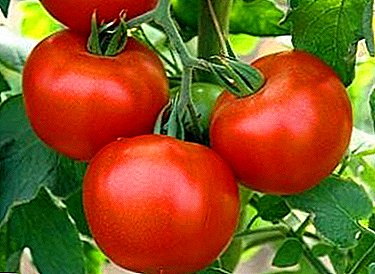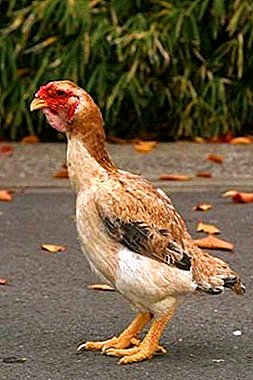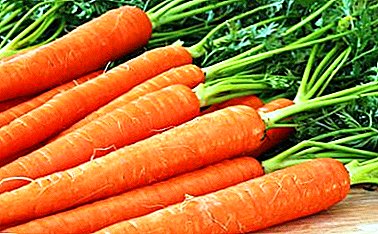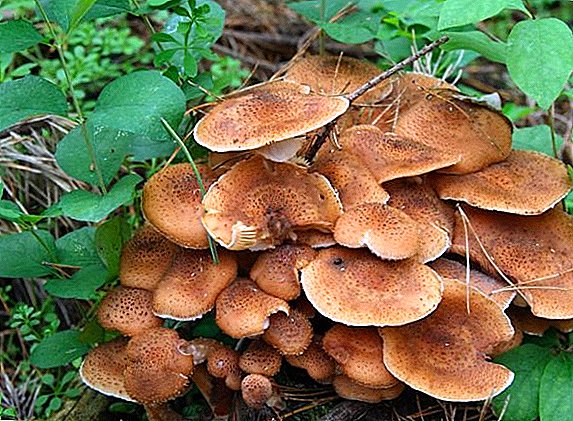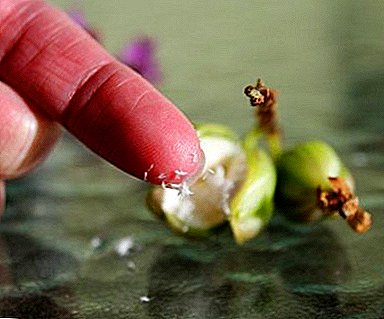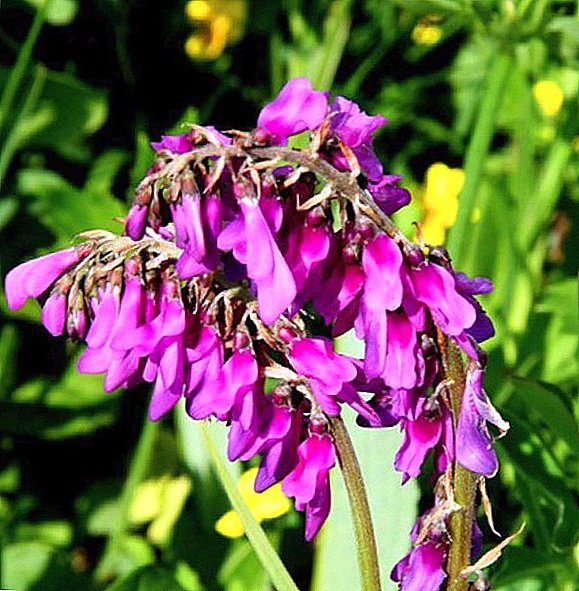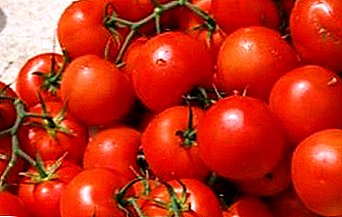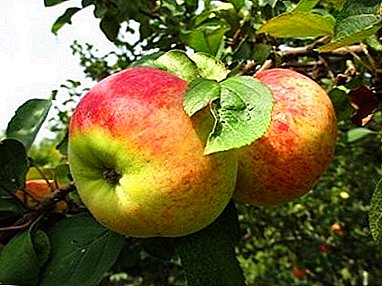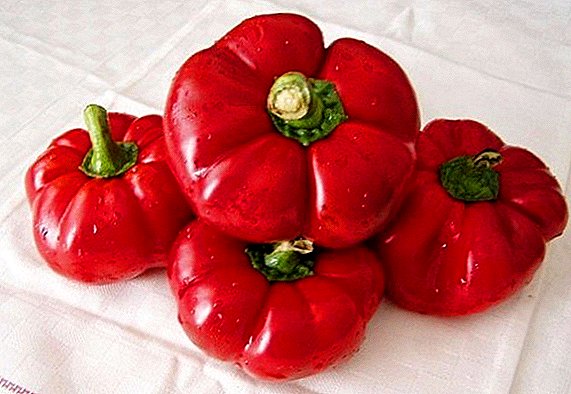 Red pepper Ratunda has already become an everyday product in our diet, sometimes even wondering why this pepper is Bulgarian, and not domestic Ratunda. Nevertheless, the discussion deals with the variety of Bulgarian pepper and the fruit, which is similar in color to the usual vegetable, but differs in shape.
Red pepper Ratunda has already become an everyday product in our diet, sometimes even wondering why this pepper is Bulgarian, and not domestic Ratunda. Nevertheless, the discussion deals with the variety of Bulgarian pepper and the fruit, which is similar in color to the usual vegetable, but differs in shape.
Pepper Ratunda
Bright color and external similarity with the pumpkin - these are the main distinguishing features of the Ratunda vegetable. As for the taste, they turned the vegetable into the favorite home ingredient of various dishes for many housewives and cooks. The sweetness is not cloying, although it slightly resembles honey, while Ratunda is sharper than ordinary Bulgarian pepper and is second only to chili pepper.
Read also about other varieties of pepper: "Bogatyr", "Gypsy F1" (this variety can be grown both in the greenhouse and in the open field).
Important! The Ratunda pepper variety has another feature - the ability to adapt to cohabitation with bitter pepper, when a sharp hybrid is created as a result of cross-pollination.
Growing conditions
Ratunda pepper requires special growing conditions, so you need to pay attention to the description and Recommendations before boarding:
- So as not to impede the flow of air, the soil must be loamy;
- The land on which cabbage or cucumber is grown will be an added advantage for growing peppers;
- In native conditions, the plant is planted by seedlings at the age of 2 months;
- To obtain seedlings, seeds are steamed with potassium permanganate and rinsed with clean water;
- Saplings that have leaves are diving;
- Top dressing for pepper standard - mineral fertilizers. Used during the growing season.
Important! It is worth remembering that watering a vegetable should be regular. Only warm water when the sun goes down.

Seeding technology
Ratunda is an annual plant. That is, during the whole growing season, the plant goes through all development cycles: from sowing to ripening. The following phenological phases exist: seed germination, leaf formation, bud formation, flowering, technical and biological ripeness.
At the beginning of the growing season, the plant grows slowly: a portion above the ground develops faster than the root system of pepper. The first leaves appear after 7 days, and the buds - 2 months after germination.
Seed preparation for planting
The success of growing Ratunda pepper contributes to quality seedlings. Mostly peppers like to grow on the windowsills or in small gardens in the country. For the technology will need: soil mixture, which must be nutritious and have a good structure.
You can also grow on the windowsill: tomatoes, cucumbers, dill, green onions, arugula, spinach, lettuce, iceberg lettuce.
Preparing a mixture of humus, earth and coarse sand with proportions of 3: 3: 1. A glass of wood ash is added to one bucket of the mixture. Seeds use fresh from last year's harvest. They are necessarily treated for 20 minutes in a one-percent solution of potassium permanganate at a temperature of + 20 ° C-22 ° C, then washed with pure water and dried to flowability.

Substrate preparation
For seedlings, the soil must be fertile, well absorb substances and pass water. The best option is a mixture of humus, sand and turf.
Seeds are sown at the end of February and germinated at a temperature of + 25 ° С, not lower! Seedlings usually appear 2 weeks after planting, and when shoots appear massively, they are transferred to a cool, lit place where the temperature is + 17 ° C-18 ° C degrees.
Sowing scheme
Seeds are planted in boxes, maintaining the temperature of the soil + 25 ° C. So that the seedlings do not stretch, they reduce the temperature for seedlings after germination. Crops must be watered with extremely warm water as the soil dries out. Feed the seedlings 2 times with complex mineral fertilizer in the form of a liquid.
Did you know? Ancient excavations show that the vegetable is one of the oldest in the world: history is 9 thousand years old. In addition, scientists have found that a type of vegetable prevents the onset of cancer in smokers.
How to care for Ratunda pepper seedlings
Important points in the care of Ratunda pepper are timely watering, proper garter, weeding and dressing. Loosening of plants should be carried out carefully, because the vegetable surface system of the roots. Gardeners with experience believe that for higher yields, you need to remove the central flower on the plant.
During the landing in the greenhouses are set garter pegs, so that after the plants are not injured. The future vegetable is formed in 3 stalks, with the lower leaves being removed. Pollinators are attracted to improve the yield, so vegetables are sprayed with sugar solution and boric acid.
Did you know? In Ratunda there is vitamin C, the content of which can be compared with citrus fruits.
Pickling seedlings in open ground and cultivation agrotechnology
The ideal moment for picking is considered the phase of the appearance of the first leaves. Picks perform carefully, as the young roots easily injured. To prevent damage to the root system, the seeds are planted in separate containers of small size.
Landing in open ground
The seedlings are planted in the open ground usually at the end of May - the beginning of the summer season, when there is no threat of spring frosts. According to the scheme, the planting is 60 by 30 centimeters, and for tall varieties - 70 by 30 centimeters. The hybrid is resistant to diseases, extreme conditions (in heat), and pests.
Soil care
The soil for growing Ratunda pepper is prepared in a year, contributing to 1 square meter under the predecessor: up to 10 kilograms of organic fertilizer, in the autumn 60 grams of phosphate fertilizer for digging.
In the spring, 40 grams of ammonium nitrate is added to the upper surface of the soil. Vegetable does not tolerate potassium chloride. Excess nitrogen contributes to dropping ovaries and flowers. If phosphorus is not enough, the fetus slows its growth, matures unevenly, and the hard part appears in the pulp.
Watering and dressing varieties
Ratunda is watered with warm water heated in sunny weather. So seedlings take root faster and better. During the growing season the vegetable is watered constantly. If you water the vegetable with cold water in hot weather, the plant will wither.
Learn how to organize automatic drip irrigation. You can make such a watering yourself with the help of plastic bottles.
Best suited drip irrigation technique, simultaneously with fertilizing minerals. But often resort to mulching. The treatment perfectly protects the soil from drought and overheating, as well as overcooling at night. With temperature drops, the plant would experience stress, but thanks to an 8-centimeter layer of mulch, the degree drops are insignificant.
Advantages and disadvantages of Ratunda
Ratunda is very helpful and has its advantages:
- The composition has ascorbic acid in large quantities;
- Peppers are not very sweet, so Ratunda is often used for salads, hot dishes, as a moderate savory ingredient;
- On the content of vitamin C, vegetable overtakes currants and lemon;
- There are also P-vitamins;
- The plant has many trace elements and acids of organic origin.


